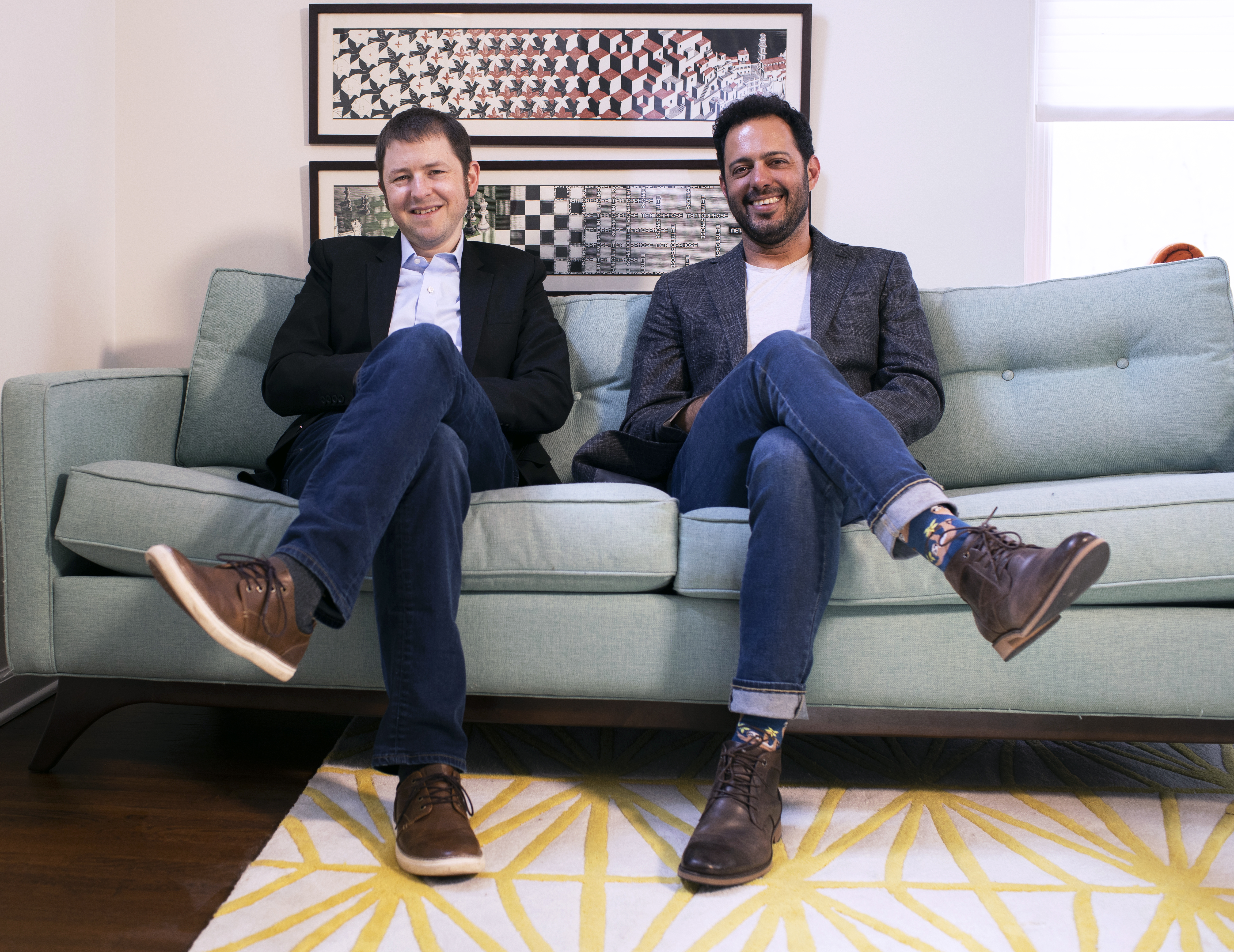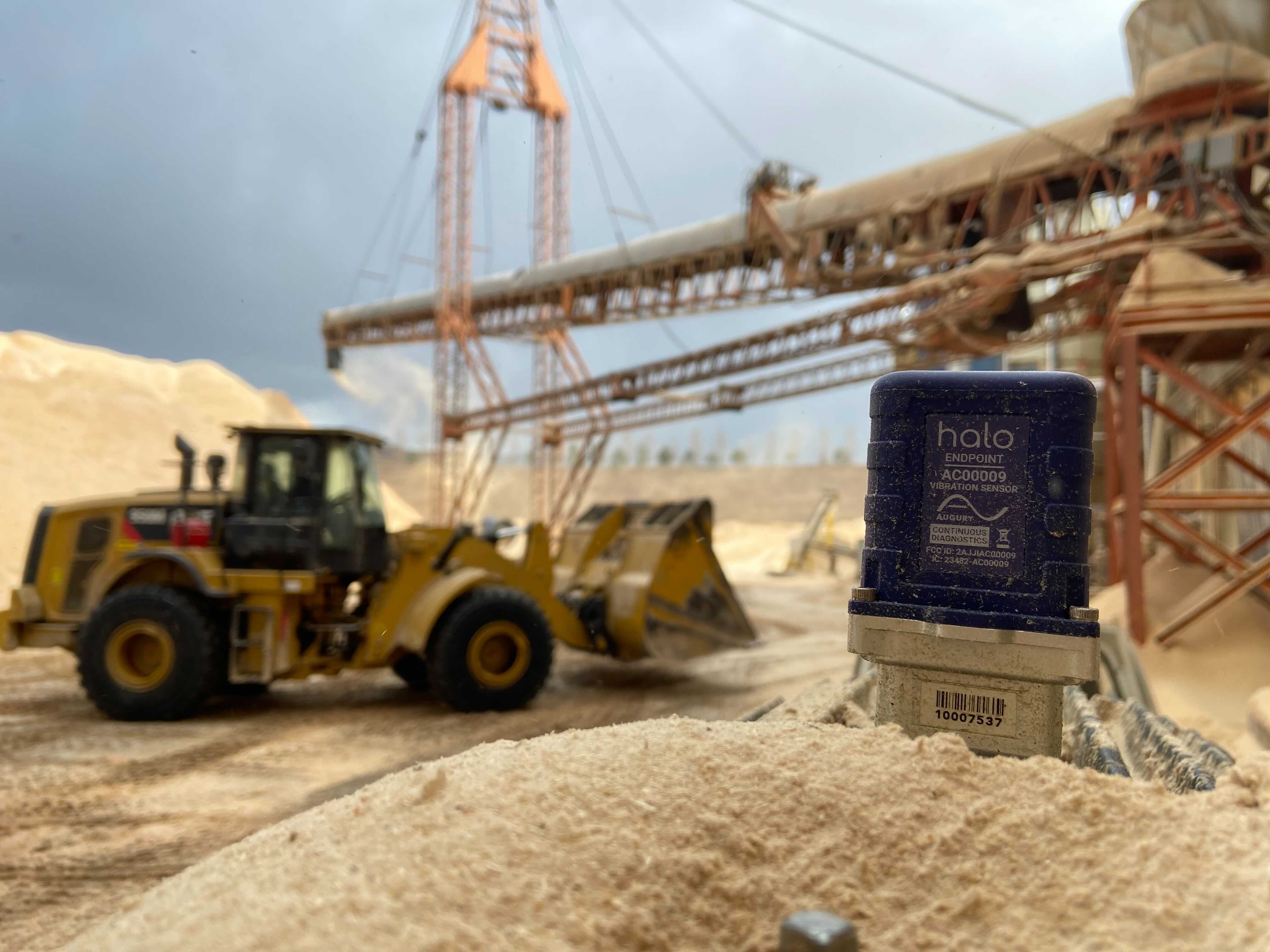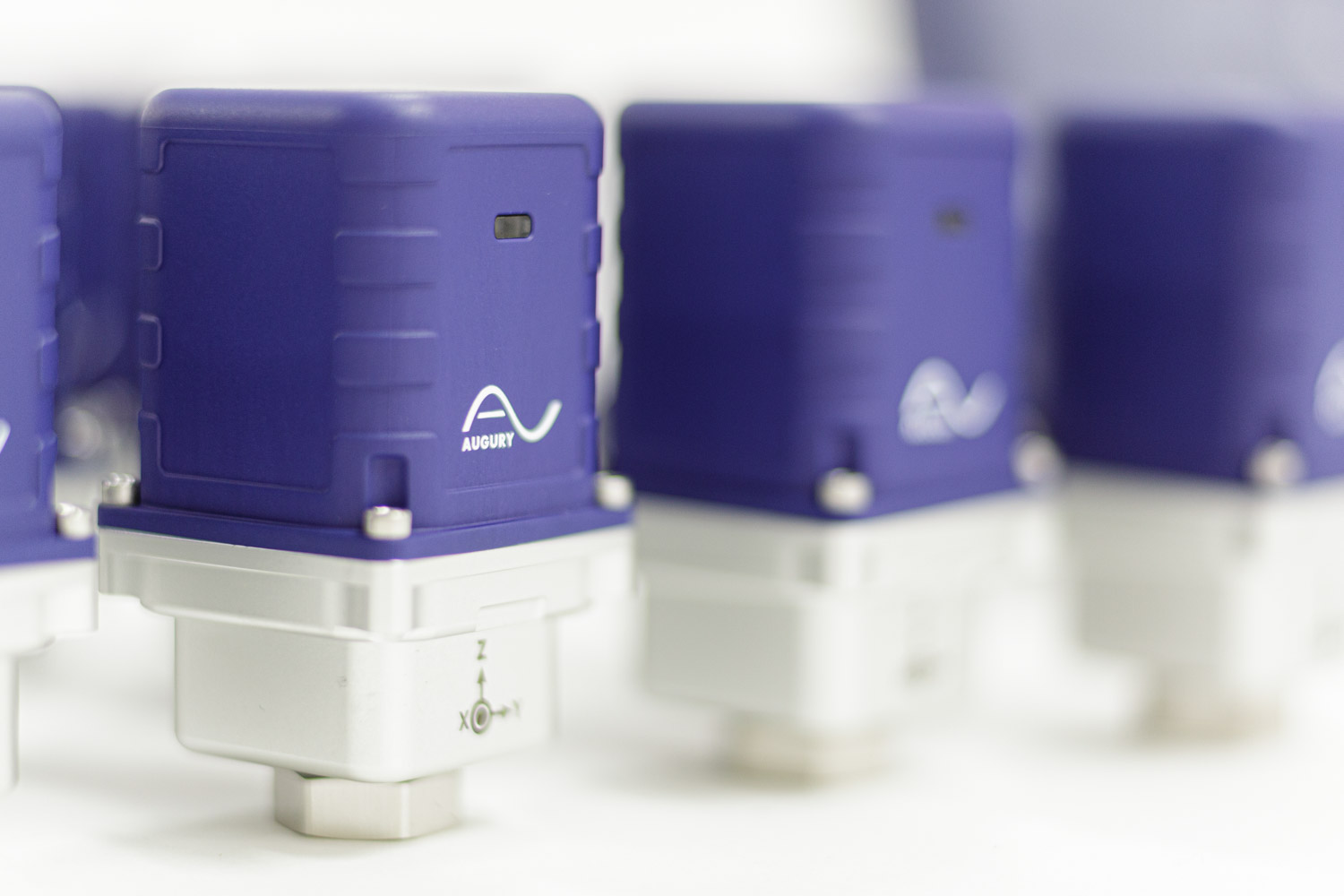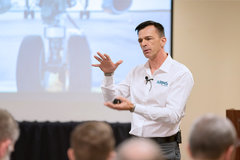In October 2021, Baker Hughes announced an investment and long-term commercial alliance with machine-health company Augury. The collaboration will build on the existing asset performance management (APM) capabilities in the Baker Hughes family. Augury will integrate with Bently Nevada’s System 1 platform, which monitors tens of thousands of machines across critical industrial assets for more than 1000 customers worldwide. Adding Augury’s advanced sensor technology and software will increase predictive capabilities for those customers and help them lower energy consumption and emissions.
Augury’s co-founders Saar Yoskovitz and Gal Shaul met at Israel’s institute of technology Technion; the former studied machine learning on acoustical data and the latter studied computer science. Together they hit upon an idea to build a company that would meld their expertise to create technology to listen to machines and use that audio data combined with AI and ML algorithms to diagnose their health. Beginning in Shaul’s parents’ garage in 2011, the friends spent three years developing their unique solution before taking it to the world, beginning with manufacturing. Yoskovitz, now CEO, and Shaul, now CTO, share some of their vision for bringing the Augury solution to the energy sector.

What do you mean by being on a ‘category creation’ journey?
When we started Augury 10 years ago, we understood that there’s an opportunity to bring the modern-age technology from the consumer world – iPhones, other connected devices, sensors, and advances in AI – to the industrial market. We started with manufacturing and commercial facilities and now we’re going into oil and gas and the energy sector. Initially, we were part of the predictive maintenance realm, but as we spoke to more and more of our customers and partners, we understood that machine health is the fundamental problem to solve. Machine health is not a maintenance problem; it’s a supply chain risk management problem and a sustainability problem. The problem we’re solving is much larger than how the market views it.
We’ve embarked on this journey to educate the industry – and maybe the whole world – on the importance that machines play in our supply chains and in society at large. That is the category creation motion that we’re in the midst of now.
What opportunities do you see for the supply chain for oil and gas and the wider energy sector?
Because we started in the manufacturing space – in the process industry – many of the examples we have come from that side of the industrial world. But we have also done some work in oil and gas, refining, and power generation, and we see a lot of analogies. We can apply a lot of the same value drivers that we see in manufacturing to the oil and gas sector.
One example is work we have done with a large cement manufacturer. We found that by decreasing unexpected downtime – avoiding failure and increasing the uptime of the machines and the production line – it did more than just increase their efficiency and productivity. We were able to unlock the equivalent production capacity of two more factories within their existing portfolio. Previous inefficiencies meant they were losing so much productivity that, essentially, they had a shadow factory hidden within their existing facilities.

We are confident that we can find similar ‘shadow’ plants across all sorts of industries. For oil and gas, for example, once they unlock those increased efficiencies, they have the option to build two new refineries, or they can increase the efficiency and productivity of all their existing production lines and save hundreds of millions of dollars. Avoiding a new refinery also avoids the challenge of hiring all that new talent, locating a new site, and many other additional expenses. It shows how simply improving the health of a machine asset quickly affects the top line and their investment in company growth and infrastructure. We can take this to a whole range of value drivers – from sustainability to business impact and all the way to cultural change. We have a vision for how companies can work better with their employees, upskill the existing workforce, and then bring a whole new generation into these industries.
Our approach to working with customers in the energy sector is to first look at everything that is not the most critical piece of equipment on site. The Bently Nevada APM solution that Baker Hughes has in place is already taking care of the most critical equipment; we are looking beyond that in the wider machine health realm. For every drill you have on-site, there may be 400 auxiliary pieces of equipment supporting that activity. One machine bearing, one pump, or one fan may not be critical individually, but as a group, those assets are absolutely critical to operations. We work with rotating equipment across upstream and downstream facilities with oil and gas customers to help them change the way they operate from their current time-based or compliance-based maintenance schedule.
Do you have any projects underway?
We started working with one large refinery late in 2020, and it’s seeing really good value. We’re working on the rotating equipment – pumps, fans and compressors, and everything Gal just described – but also moving into the static equipment. Working with steam traps is one example that we’re already doing with selected customers. We’re also working with an electricity company on modeling to diagnose large transformers’ health. Those are just two examples of how we’re increasing coverage beyond the rotating equipment – which is where we’re starting with Baker Hughes and Bently Nevada.
We work to change the supply chain as a whole and look to reduce the number of spare parts on-site. We make sure that logistics partners have access to the operator’s machine health data and insights. In situations where you have a concentration of machines in a specific region, you can reduce the number of spare parts on-site and have them ready at the logistics center, shipping the replacement or its parts only when a machine is actually in danger of failing. Having parts on site is a huge burden on facilities today, especially in the oil and gas sector, and using Augury’s insights helps to move the supply chain from a ‘just in time’ model to ‘just in case’, at a point where we know the just in case moment is imminent.
How does Augury improve energy efficiency for operators?
ESG (Environmental, Social, and Governance) is now one of the main strategies for the whole industry and we are really happy to see that shift. The best proof point for how Augury can assist in improving energy efficiency is a study done by the US Department of Energy that found that predictive maintenance can reduce energy consumption by 20%. The physics are pretty simple: if your machine is not balanced or not aligned well, it will require more energy to get to the same throughput. By ensuring a machine is always balanced or has the right level of oil or grease based on insights, you can really reduce the energy consumption of that machine.
That’s on the machine level. Now we want to get to the whole system level. This could be around optimizing the entire production line’s configuration and optimal run point. So far, there are more gains that we have not fully quantified, and we are working on doing that with our customers so we understand the potential.
We have had customers who’ve avoided building entirely new facilities...a huge saving to the environment.
Saar Yoskovitz, Augury co-founder
I previously mentioned steam traps. A huge source of energy loss is if you have a steam trap that is open and letting out steam into the air. That steam took a lot of energy to produce. We can monitor those steam traps to reduce that waste, we can definitely impact the energy consumption of facilities.
Sustainability goes beyond just energy. Gal mentioned spare parts and one of the benefits of machine health is reducing spare parts. Where do all the spare parts go when you discard them – into the waste stream, which is obviously not good for the environment. Today, every quarter or every year, facilities change all the oil in their pumps, or just throw out all the grease, and then replace it for no good reason. If they know the machine’s condition, maybe they don’t need to do it yet, so that’s an opportunity to reduce waste, which will also have a huge impact on the environment.

We describe it as moving from compliance-based operations to insights-based operations. Today, there is a schedule for preventive maintenance every week, every quarter, or every year. You stick to a prescribed schedule to do these tear-downs with machines, and we want it to be more insight-based, on the actual condition of that machine. That’s where we’re going and where our customers are asking us to take them. We have had customers who’ve avoided building entirely new facilities, which is a huge saving to the environment. And we are extending the life of assets because of improved maintenance.
When you look at the three Rs – reduce, reuse, recycle – we are on the reduce side. We’re extending asset life, reducing the number of spare parts used, reducing disposables, such as changing oil or grease, and we are improving efficiencies. We are still assessing the operational efficiency over time when machines are better optimized.
Could you talk more about how changing the relationship between machines and people will influence workplace culture?
We’re building the machine health ecosystem from the bottom up. We start with the machines, and then we move to the people who are using them and fixing them, and how they will operate them day-to-day when Augury is installed. With the assistance of Augury’s vibration analysis, we move to AI insights-based maintenance. This means that everything is connected and the people working with the machinery know the real-time condition of every machine and what needs to be repaired. Maintenance planning moves from a preventative maintenance schedule where machines are maintained at fixed time intervals whether they need it or not, to maintaining machines only when they need it. From a workforce point of view, this creates new roles that are at the intersection between maintenance and operations. These roles have been growing in other industries and will also come to this market.
That intersection between operations and maintenance comes from digital transformation, which makes all the operational data much more transparent. We believe that cultural changes within plants – where a lot of new data and insights become available – will bring more autonomy across the workforce, and people will be driven to make the kinds of changes that reduce energy waste and consumption.
The biggest driver of innovation and organizational culture through society generally starts with equality and diversity. Diversity and inclusion mean more people have a say in what’s happening. So that means people on the frontline in manufacturing or oil and gas are more empowered to make changes and take action, and understand this is everyone’s problem.
The more data we provide to show clearly what’s happening, the more we can all work together to solve problems. That requires diversity of thought, and being allowed to speak your mind, even if it’s not a popular thought at that moment, and being able to not only accept change, but to be a driver of change. The oil and gas industry can be the driver of positive environmental change. That can happen when you include more people and all aspects of diversity and inclusion. Energy transition doesn’t happen with four people in the room understanding the magnitude of the problem. It needs everyone – and the machine information we offer is a really powerful part of that conversation.
Is there anything else you wanted to make sure we knew about?
We have talked about the industry at large, but I want to mention Baker Hughes specifically. One of the reasons we’re so excited about this partnership is working with the team. Every single person we’ve met at Baker Hughes has been really driven about not just having the best technology, but also working out how we create more value for our customers. The two cultures – Augury and Baker Hughes – are a really good fit, and that’s why we have really high conviction around this partnership. There’s a lot to say about the work that is happening inside Baker Hughes to transform it into an energy solutions technology company, and we’re very happy to assist in any way we can.
There are a lot of unknowns in our journey, but the potential is great, and we are here to enjoy the ride. There’s so much we can build together. Having fun with that and enjoying the journey is a lot of what innovation requires to succeed. We want to invite everyone in this realm to join us in what Augury is aspiring to do.
Energy Forward Stories
Sign up to stay up to date on the latest innovations and people shaping the future of our industry.




